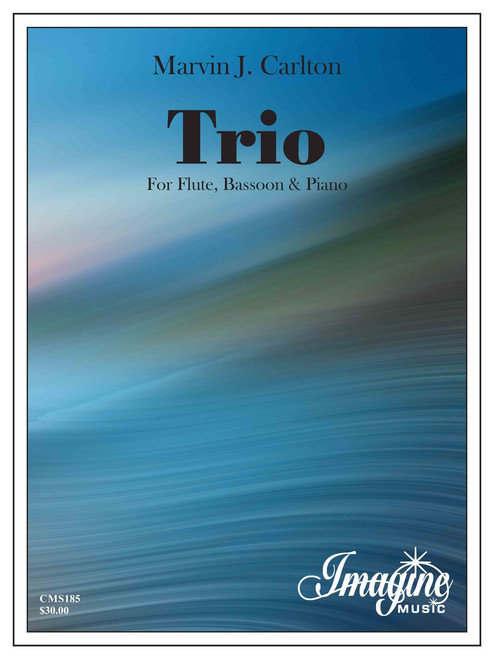Product Overview
My Trio for Flute, Cello, and Piano was composed for a trio of those instruments with which I performed some years ago. This composition followed a Stephen Foster Suite written for the same instrumentation, intended for performances in nursing homes with recognizable music. The current trio was conceived with the consideration that woodwinds often favor flat keys, while strings favor sharp keys. The piano part was initially planned to exclude natural keys. Consequently, the first movement features piano accompaniment in sharp and flat keys specific to each instrument, while its own thematic material is introduced in A minor. As evidenced by the score, this concept was largely superseded by creative and expressive considerations. A piece conforming to the initial plan may be realized in the future.
The first movement comprises three themes, each initially presented by the cello, then the flute, and finally the piano. All three instruments subsequently unite for the development section. The climax culminates in a set of virtuosic piano arpeggios leading to the recapitulation of the themes in reverse order. Following another climax, the movement concludes softly with a quiet coda.
The second movement, subtitled "A Heavy-Footed Dance," was initially conceived at a faster tempo, but a slower interpretation was deemed more suitable in subsequent performance. It bears resemblance to a Mahler Landler movement, such as the scherzo of the first symphony. The principal key is B minor, and a brief, lyrical trio section is included.
The third movement represents my response to the events of September 11th. It adopts the character of an elegy. The piano provides a foundation of sustained quarter-note chords while the flute presents the primary melody with counterpoint from the cello. The key is G minor. Following a brief climax, a middle section suggesting tranquility ensues. The key shifts to G major, and excerpts from a Bach Chorale and a hymn tune by Robert Schumann are incorporated. However, these quotations are not presented in strict rhythmic values to convey a sense of unease. A new motif is introduced in the piano with bass rumblings, and the opening material is restated with variations. The coda transitions to G major for a quiet conclusion.
The final movement, "Latin-esque," draws inspiration from the Lounge Music genre of the 1950s and the contributions of Juan Julio Esquivel in his RCA Victor recordings. The genesis of this movement was my attendance at the Upper Midwest Flute Association, where I heard a virtuoso Mexican flutist demonstrating remarkable improvisational abilities. The key is G minor in 5/4 time with a brisk tempo. The piano presents the "Montuno" (a passacaglia-like theme), and the cello, flute, and piano each offer variations on this figure. The bass of the piano then assumes the variation while the right hand, flute, and cello provide complementary material. The piano initiates a rhythmic ostinato that leads to a dramatic restatement of the third movement’s theme. The ostinato returns, and a virtuosic coda concludes the work with a unison G, devoid of distinct major or minor inflection.
Additional Options:












